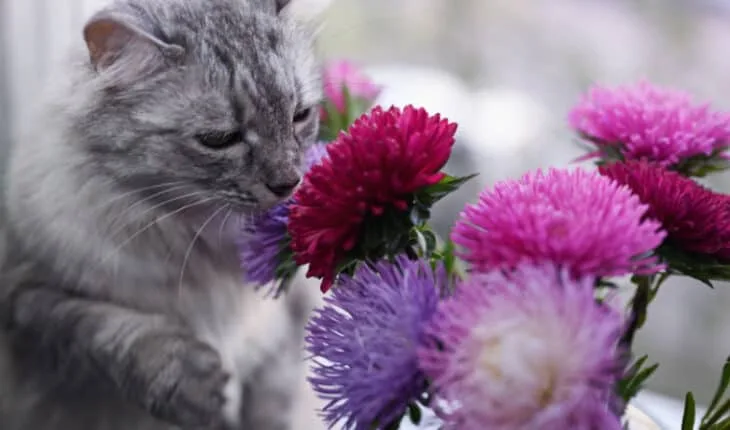A cat’s sense of smell is around 14 times better than that of humans, and while dogs have around 300 million olfactory receptors compared with 200 million in cats, studies have shown that cats have a far superior ability to distinguish between scents compared to dogs.
Recent studies have begun to unlock the secrets behind cats’ incredible sense of smell, and scientists may even use the intricate structure of a cat’s nose to inspire improvements in modern laboratory equipment.
The Structure Behind Cats’ Superior Sense of Smell
A complex collection of bony airway structures in a cat’s nose is largely responsible for their superior ability to sniff out food, friends, and potential threats. In a recent study, researchers from Ohio State University created a 3D model of a cat’s nose to simulate how inhaled air flows through the nasal structures, hoping to find a clue as to how cats can smell so well.
What they found was incredible: the incoming air is separated into two flow streams after entering the cat’s nose. One of these streams is filtered and slowly delivered to the lungs, while the other is quickly delivered directly to the olfactory region of the nose, where complex odors are identified. This coiled nasal structure is more than 100 times more efficient than the straight channel found in the noses of amphibians and some mammals. Plus, it can fit more smell receptors in a confined space. This makes cats far more accurate at discerning scents than many other mammals.
In essence, a cat’s nose functions as a gas chromatograph (a tool that in laboratories detects and separates vaporized chemicals). A cat’s nose performs this job so well that its structure may even inspire improvements to the gas chromatographs used today.
Dr. Maja Platisa (DVM MRCVS), in-house veterinarian at excitedcats.com, says, “A cat’s proficient sense of smell continues to amaze veterinary professionals, researchers, and cat owners. This new study has allowed us to better understand the complexity of the cat’s nasal anatomy and the labyrinthine airway structure that helps them adapt to diverse environments through their sense of smell.”
Why Cats Require Such a Good Sense of Smell
Cats’ noses need odor detection to be efficient, so one nasal branch quickly delivers inhaled odors to the olfactory region, allowing for fast detection rather than waiting for air to filter through. Cats would lose most of the odor if the air had been cleansed first, and the process consequently slowed down. Cats rely heavily on their sense of smell for food detection, danger, and recognition of their trusted companions. This makes quick identification essential.
This research is valuable and helpful for cat owners, as we can now be aware of how powerful and sensitive a cat’s sense of smell really is. This helps owners stay vigilant and adds more reason to be more careful with the use of perfumes, scented products, and cigarettes around their feline pets.
Excitedcats.com in-house veterinarian Dr. Lorna Whittemore (BVMS, MRCVS) reminds owners that “a cat’s sense of smell is also closely linked to their appetite and willingness to eat. If a cat is unwell with a blocked nose, they are often reluctant to eat. Any steps forward in understanding olfaction in cats will help us to better care for our amazing feline companions.”
- Gut microbiome could delay onset of type 1 diabetes - 3rd April 2025
- The da Vinci 5 Robot Is Set To Transform Bariatric Care: - 31st March 2025
- Beyond money: the hidden drivers fuelling child food insecurity - 31st March 2025






